As cities expand and urban landscapes reshape our environment, a remarkable adaptation is taking place above our streets and among our buildings. Birds of prey—raptors whose ancestors have hunted wild landscapes for millennia—are increasingly making their homes in our concrete jungles. These magnificent predators have found ways to not only survive but often thrive in urban settings, turning skyscrapers into cliff faces and parks into hunting grounds. Their presence represents both a testament to nature’s resilience and a unique opportunity for urban dwellers to witness spectacular wildlife in unexpected places. From peregrine falcons diving at breathtaking speeds between buildings to red-tailed hawks nesting on window ledges, these urban hunters have rewritten the rules of adaptation. Let’s explore nine remarkable raptor species that have successfully colonized our cities, transforming urban ecosystems and challenging our perception of wildlife in human-dominated landscapes.
Peregrine Falcons: From Cliff Edges to Skyscrapers
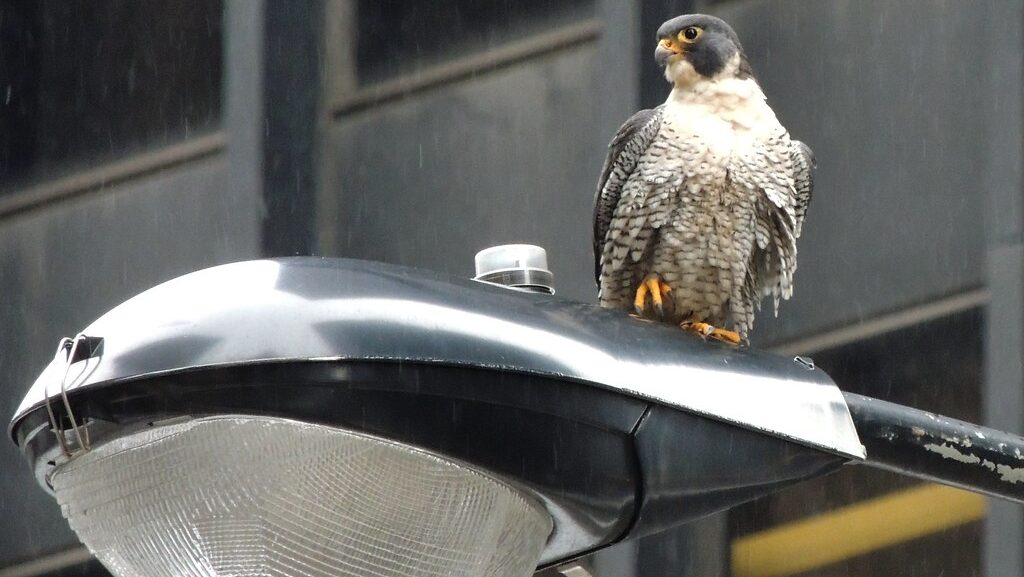
Perhaps the most iconic urban raptor success story belongs to the peregrine falcon, whose comeback from near-extinction represents one of conservation’s greatest triumphs. These sleek hunters, capable of diving at speeds exceeding 200 mph, have found that tall buildings perfectly mimic the cliff faces they traditionally used for nesting. In cities like New York, Chicago, and London, peregrine populations have exploded as they feast on abundant pigeon populations and nest on ledges and rooftops high above busy streets. Their adaptation has been so successful that urban peregrine populations often show higher breeding success than their rural counterparts, with some city pairs producing more offspring annually than those in natural settings. The urban lifestyle offers these falcons protection from some natural predators and year-round prey availability, transforming what was once seen as inhospitable human territory into prime raptor real estate.
Red-tailed Hawks: Masters of Urban Adaptation
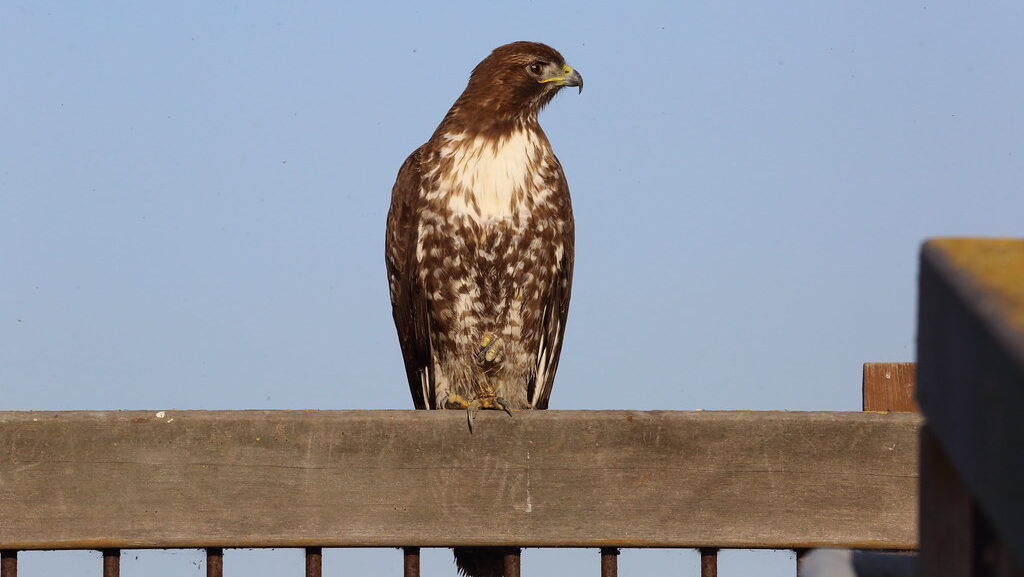
The red-tailed hawk has proven itself remarkably adaptable to city life, becoming one of North America’s most visible urban raptors. These broad-winged birds, with their distinctive rusty tails, have learned to nest on building ledges, water towers, and even famously in upscale apartment buildings alongside Central Park in New York City. Their flexible diet contributes significantly to their urban success, as they readily hunt squirrels, rats, pigeons, and other city-dwelling creatures that humans often consider pests. Red-tailed hawks have developed remarkable tolerance for human activity, sometimes hunting and nesting surprisingly close to busy streets and pedestrian areas. Their highly visible hunting behavior and tendency to perch prominently on tall structures makes them perhaps the most frequently observed raptor in many American cities, creating countless opportunities for urban wildlife education and appreciation.
Cooper’s Hawks: Suburban Backyard Hunters
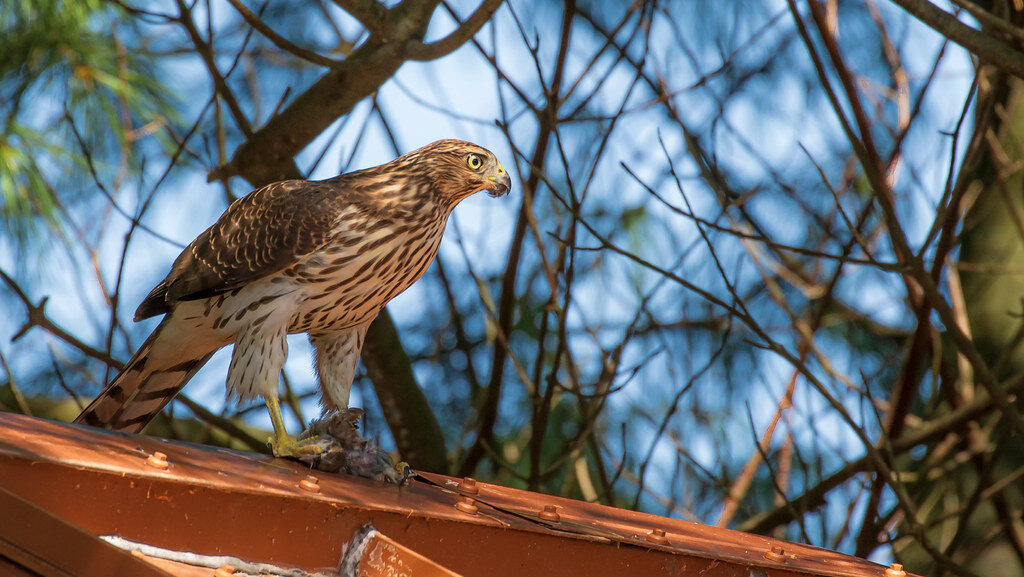
Once primarily woodland birds, Cooper’s hawks have made an astonishing transition to urban and suburban environments over recent decades. These medium-sized accipiter hawks specialize in hunting other birds, making them perfectly suited to neighborhoods with backyard bird feeders, which effectively create concentrated prey opportunities. Research indicates that in some cities, Cooper’s hawk population densities now exceed those found in their natural woodland habitats, with nesting pairs sometimes established less than half a mile apart. Their hunting strategy—quick, maneuverable flights through tight spaces—translates perfectly to neighborhoods with scattered trees and buildings that create an obstacle course not unlike their native forest habitats. Though historically shy around humans, urban Cooper’s hawks have become increasingly bold, sometimes hunting backyard songbirds while homeowners watch from windows just feet away.
Great Horned Owls: Nocturnal Urban Predators
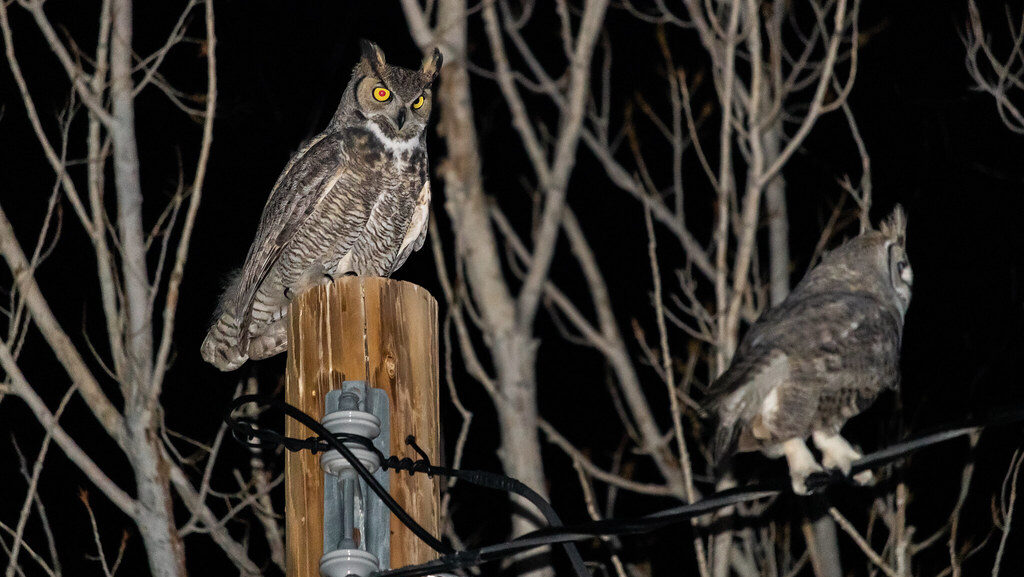
The imposing great horned owl has established itself as the dominant nocturnal predator in many urban areas, adapting to city life with remarkable success. These powerful hunters, identifiable by their prominent ear tufts and deep hooting calls, take advantage of city parks, cemeteries, and even industrial areas where they can find suitable nesting sites and abundant prey. Unlike some urban raptors that specialize in particular food sources, great horned owls maintain their reputation as opportunistic predators in cities, taking everything from rats and rabbits to skunks and domestic cats—earning them the nickname “tiger of the sky” even in urban settings. Their adaptability extends to nesting, where they readily use abandoned hawk nests, building ledges, or even large planters on balconies as substitutes for their traditional tree cavities. Despite their size and predatory nature, these owls often remain undetected by city residents, hunting silently through the urban night while most humans sleep.
Barn Owls: Ghost Birds of Urban Margins
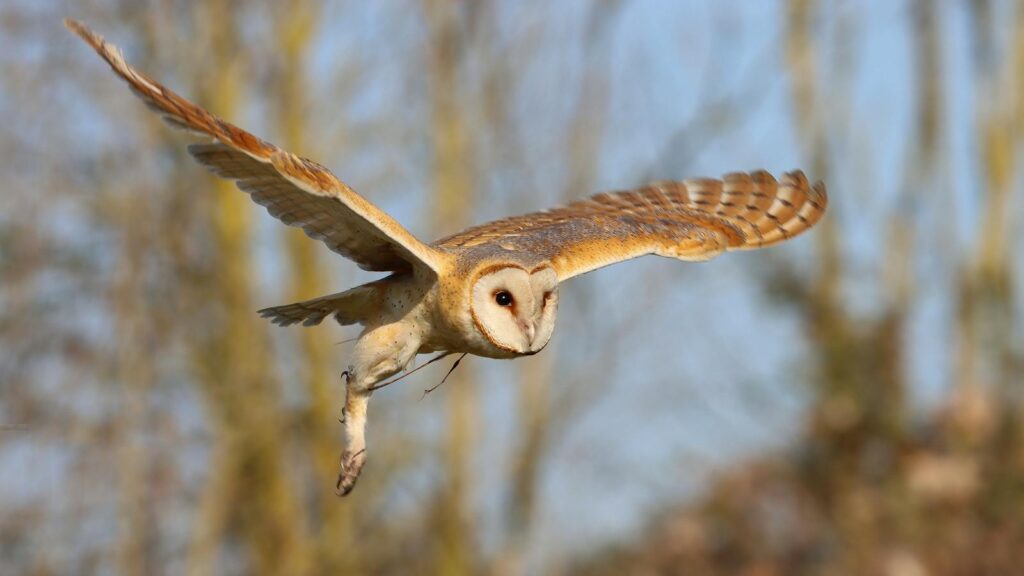
With their ghostly white appearance and heart-shaped faces, barn owls have found unexpected refuge in abandoned buildings, church steeples, and industrial structures throughout urban areas worldwide. These specialized hunters focus primarily on rodents, making them valuable natural pest controllers in cities where rat and mouse populations thrive. A single barn owl family can consume over 1,000 rodents annually, providing a natural ecosystem service worth thousands of dollars in urban pest management. Urban barn owls have shown remarkable tolerance for light and noise pollution, adapting their hunting patterns to take advantage of city rhythms while minimizing contact with humans. Conservation efforts in many cities now include installing barn owl nest boxes in parks and industrial areas, recognizing these silent hunters’ role in urban ecology and pest management.
Mississippi Kites: Graceful Suburban Newcomers
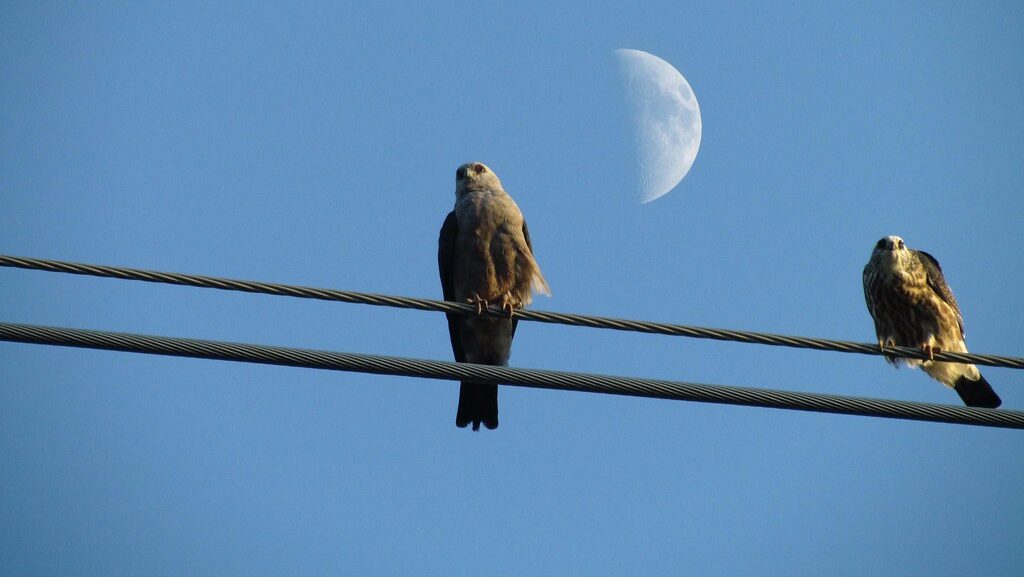
Once restricted primarily to southern woodlands and riparian zones, Mississippi kites have expanded dramatically into suburban and urban areas across the southern and central United States. These graceful, slender raptors specialize in catching insects on the wing, often hunting in groups that soar high above residential neighborhoods on summer evenings. Their relatively small size and insectivorous diet make them less threatening to humans than larger predatory birds, allowing them to nest in surprisingly close proximity to human activity, often in street trees or small urban woodlots. Mississippi kites have developed such comfort with human presence that in cities like Wichita, Kansas, and parts of Texas, dozens of pairs may nest throughout residential neighborhoods, sometimes leading to conflicts when protective parents dive at pedestrians who approach too close to nests during breeding season. Their willingness to consume problematic insects like cicadas and grasshoppers makes them valuable allies in urban pest management.
Bald Eagles: America’s Symbol Returns to Cities
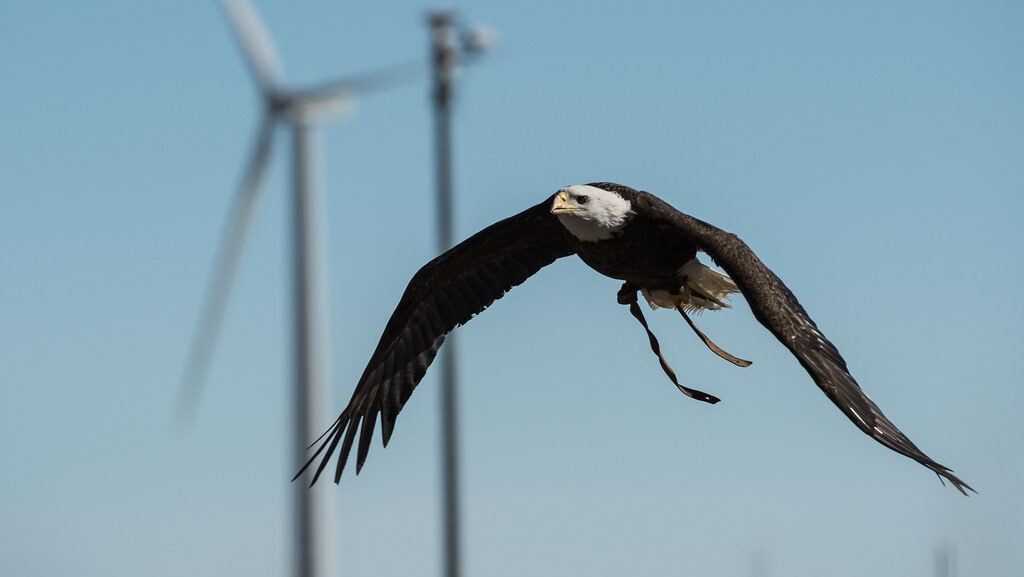
Perhaps no urban raptor presence is more dramatic than the recent return of bald eagles to major metropolitan areas across the United States. After decades of population decline and conservation efforts, these massive birds—with wingspans exceeding six feet—have established nesting territories in surprisingly urban settings, including areas near airports, highways, and industrial zones in cities like Pittsburgh, Washington D.C., and Seattle. Their urban adaptation relies on healthy fish populations in urban waterways, demonstrating the success of environmental cleanup efforts in many American cities. Bald eagles’ willingness to nest in urban areas represents a remarkable behavioral shift for a species once considered extremely sensitive to human disturbance, with some urban pairs now tolerating constant human activity, traffic noise, and even aircraft just hundreds of yards from their massive nests. Urban eagle nests often become local attractions, with dedicated webcams and viewing areas established to allow city residents to connect with these powerful national symbols.
Eastern Screech Owls: Tiny Predators in City Parks
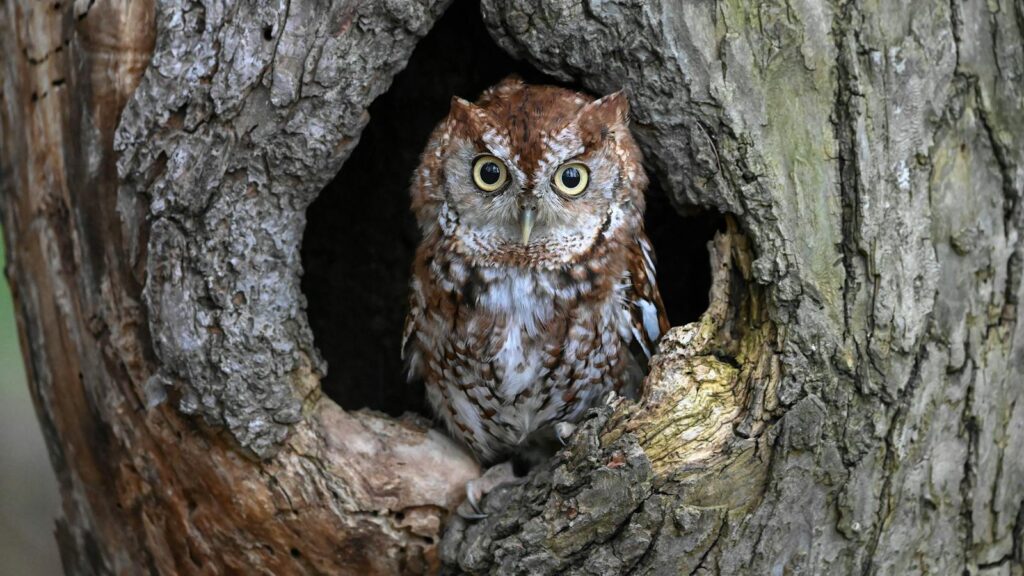
At barely eight inches tall, the eastern screech owl might seem an unlikely urban survivor, yet these diminutive hunters have established themselves as permanent residents in parks, cemeteries, and leafy neighborhoods across eastern North America. Their small size allows them to utilize tree cavities and nest boxes in even modest urban green spaces, while their diverse diet—encompassing everything from insects and earthworms to small birds and rodents—enables them to find food year-round in city environments. Eastern screech owls show remarkable tolerance for human activity, sometimes nesting in cavities directly above busy park paths or playground areas. Their cryptic camouflage and primarily nocturnal habits mean many city residents never realize these small predators share their neighborhoods, despite sometimes living within yards of human homes. Urban screech owl populations provide valuable research opportunities, with studies showing these adaptable birds may serve as indicators of urban ecosystem health and green space connectivity.
Ospreys: Fishing Specialists in Urban Waterways
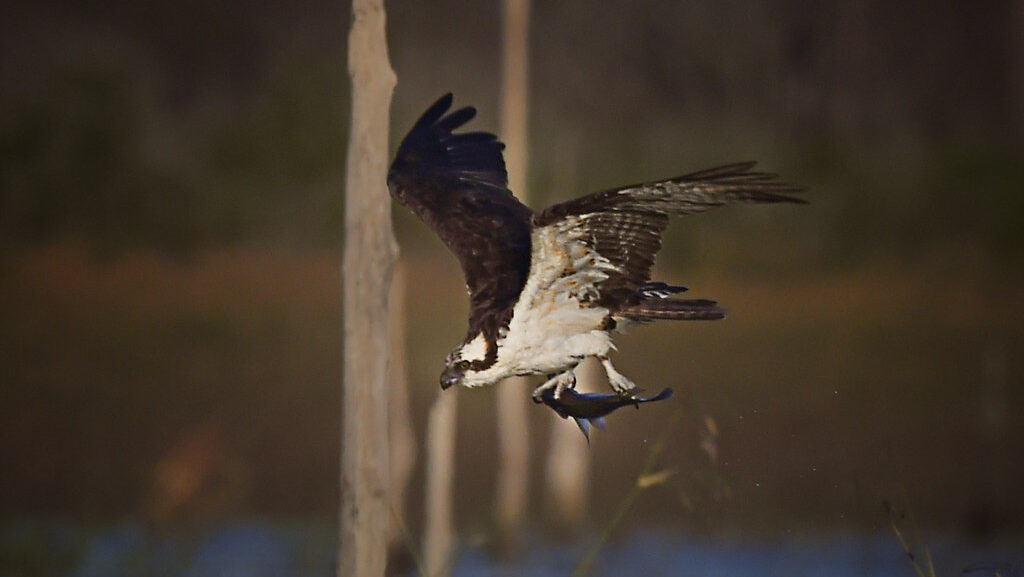
With their specialized fish-hunting adaptations, ospreys have made remarkable inroads into urban areas with clean, productive waterways. These distinctive raptors, with their white heads and dark eye stripes, increasingly nest on artificial structures like cell towers, light poles at sports fields, and specially designed nesting platforms installed near urban harbors and rivers. Their urban success hinges directly on water quality improvements, as they require accessible fish populations within diving distance of their nests—making osprey presence a living indicator of environmental progress in once-polluted urban waterways. Ospreys show exceptional tolerance for human activity, with some urban pairs nesting directly above busy marinas, waterfront restaurants, and even in active shipping ports. Their spectacular hunting dives—plunging feet-first into water from heights of 30-100 feet—create dramatic wildlife viewing opportunities for city residents who might otherwise never witness such remarkable natural behavior.
Urban Adaptations: How Raptors Survive City Life
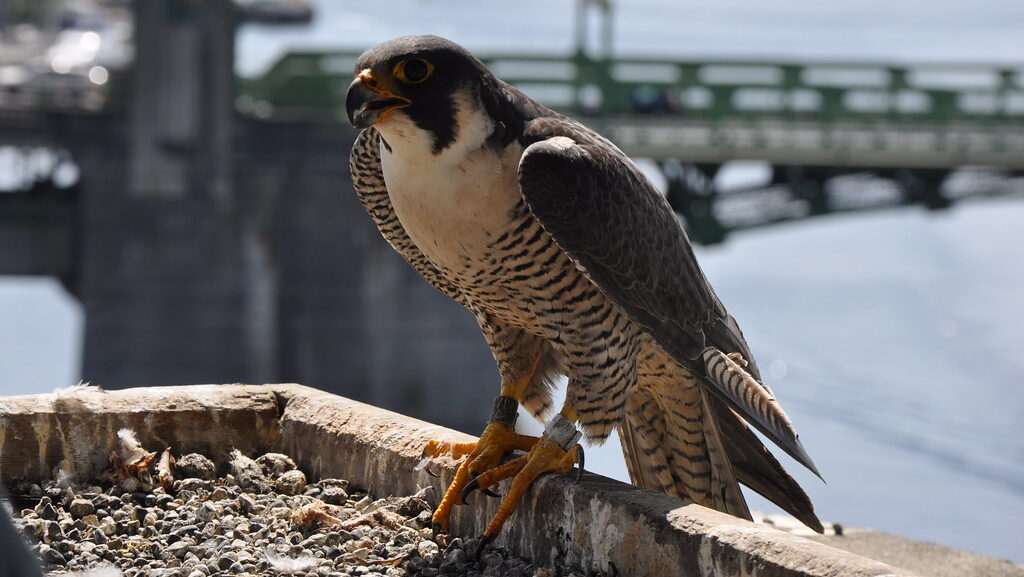
The success of urban raptors stems from a remarkable suite of behavioral adaptations that allow these traditionally wild birds to thrive in human-dominated landscapes. Many species show increased tolerance for human disturbance, with urban individuals allowing closer approach than their rural counterparts—a behavioral shift that can occur within a single generation. Hunting strategies often evolve in city settings, with raptors learning to use artificial lights to hunt at night, chase prey flushed by landscaping equipment, or even track human patterns to locate food sources, such as hawks that follow garbage trucks to catch fleeing rats. Nesting behaviors change dramatically, with urban raptors using everything from air conditioning units and window planters to bridge girders and stadium light fixtures as substitutes for traditional sites. Perhaps most significantly, many urban raptors show shifts in their daily rhythms, becoming more nocturnal or crepuscular to avoid peak human activity periods, demonstrating the remarkable behavioral plasticity that allows these wild predators to share our most developed spaces.
Conservation Challenges and Opportunities
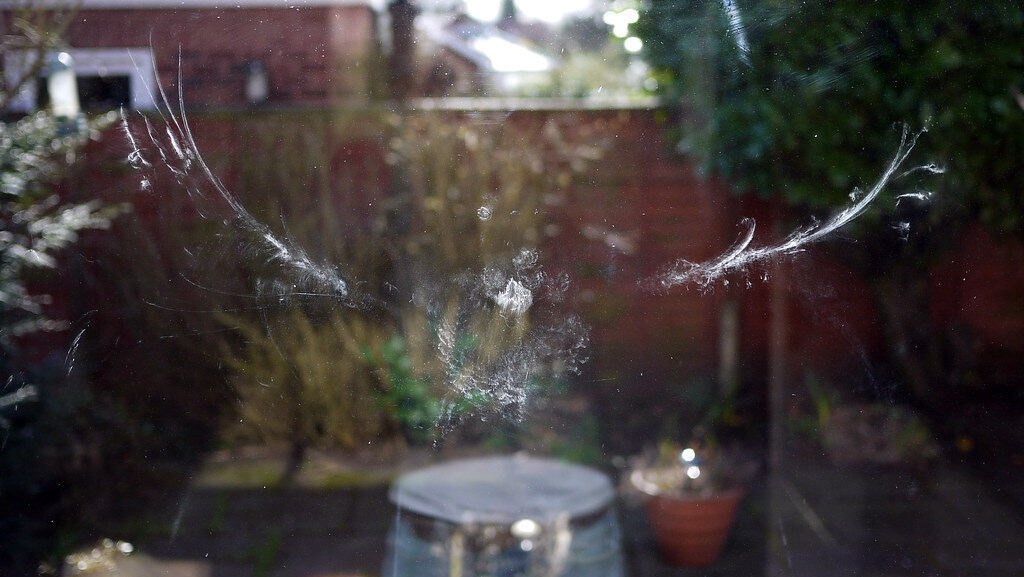
Despite their impressive adaptations, urban raptors face unique challenges that require specific conservation approaches. Window collisions remain a leading cause of urban raptor mortality, with estimates suggesting millions of birds die annually from impacts with glass buildings that either appear transparent or reflect sky and trees. Rodenticide poisoning presents another significant threat, as raptors consume poisoned prey and suffer secondary toxicity, often leading to fatal internal bleeding or impaired hunting ability. Urban nest sites may expose young birds to hazards like entanglement in trash, collisions with vehicles, and higher predation rates from urban-adapted mammals like raccoons. Conservation efforts increasingly focus on raptor-friendly urban design, including bird-safe building standards with patterned glass, reduced night lighting during migration, and creating protected green corridors through urban areas. Many cities now incorporate raptor conservation into urban planning, recognizing these apex predators as charismatic ambassadors that connect urban residents with wildlife and ecological processes occurring within city boundaries.
Citizen Science and Urban Raptor Monitoring
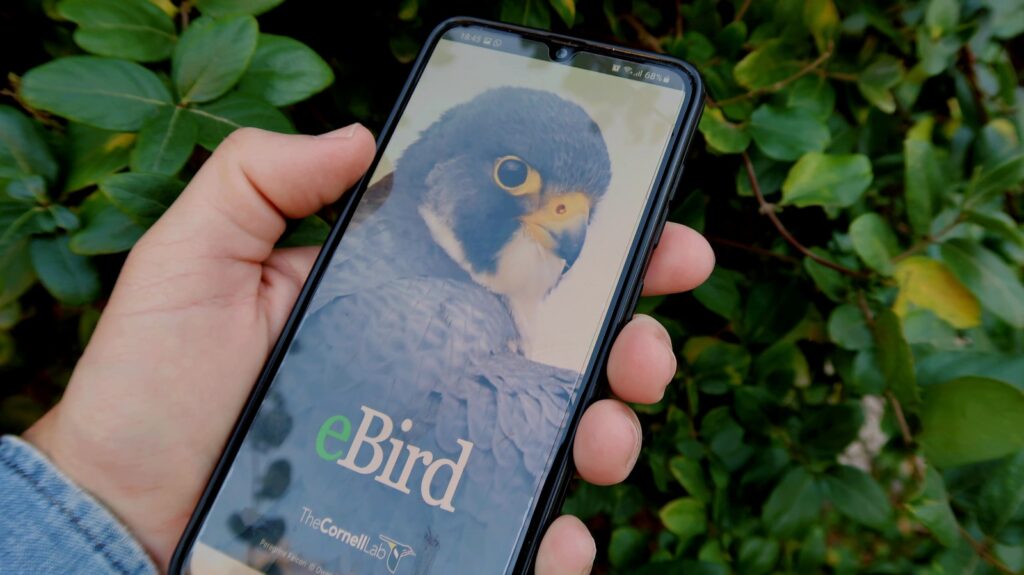
The highly visible nature of urban raptors has created unprecedented opportunities for citizen science, with thousands of city dwellers contributing valuable data on raptor populations, behavior, and breeding success. Volunteer-driven nest monitoring programs track productivity in cities worldwide, sometimes documenting every nesting attempt across entire metropolitan areas—data collection impossible in more remote settings. Popular projects like eBird and iNaturalist allow casual observers to report raptor sightings via smartphone apps, creating massive datasets that help scientists understand urban wildlife distributions and population trends. Webcams installed at urban raptor nests have revolutionized public engagement, with millions of viewers worldwide following the daily lives of city-dwelling hawks, falcons, and eagles, creating unprecedented conservation awareness and emotional connection to wildlife. This democratization of raptor research has transformed our understanding of urban ecology while creating a generation of city residents who see raptors not as distant wilderness creatures but as neighbors sharing the urban landscape.
Conclusion
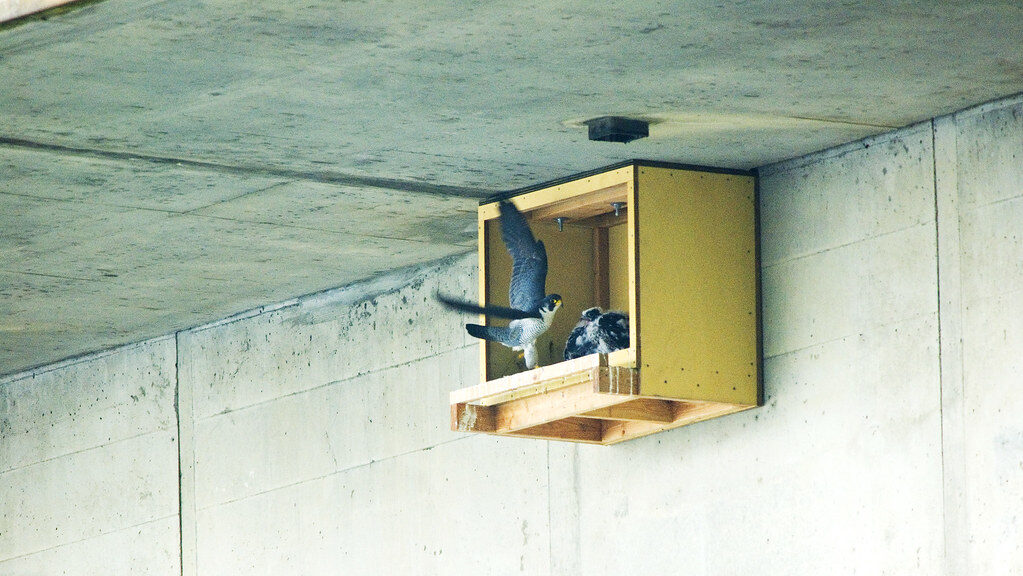
As we’ve explored these nine remarkable predators, it becomes clear that urban raptors represent far more than biological curiosities or conservation success stories. Their presence in our cities challenges fundamental assumptions about wildlife and urbanization, demonstrating that even apex predators can adapt to human-dominated landscapes when given opportunity. These birds offer daily reminders that nature doesn’t stop at city limits, and that ecological processes continue even in our most developed environments. For city dwellers, urban raptors provide accessible wildlife experiences that might otherwise require distant travel, creating opportunities for connection with the natural world right outside office windows and apartment balconies. As we continue to redesign and reimagine our cities, these adaptable predators remind us that with thoughtful planning and respect for ecological needs, urban environments can support remarkable biodiversity—including the ancient, fierce beauty of raptors on the wing.
